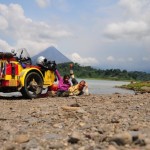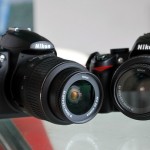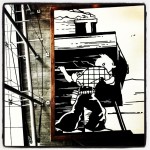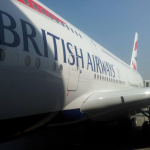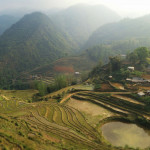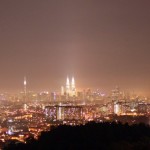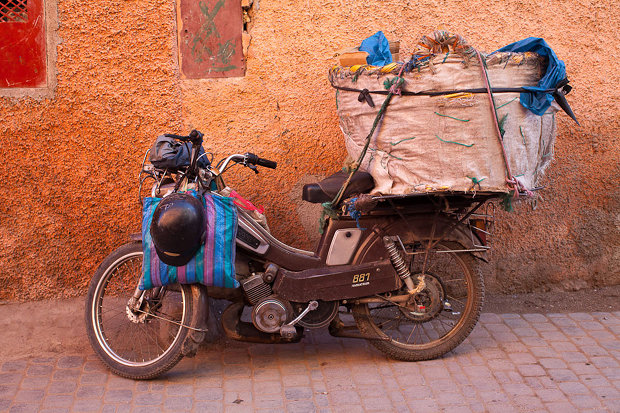
motorbike in Marrakech
Tom Robinson first set foot in Marrakech with his Olympus OM-1 back in 2003, guided by his sister.
According to him it was the first real place he’d been traveling, it was a place that really influenced him in his love for both travel and photography. In 2012 he returned to Marrakech to experience how the place had changed and to document local life with the help of his camera.
We took the opportunity to catch up with Tom to find out about how he balances his love for photography and travel, we also took the opportunity to pick his brain for all those handy travel photography tips that only experienced travel photographers know.
Tom, how did you first find your passion for photography?
My first journeys with photography started when I bought an Olympus OM-1 and decided to study it as one of my GCSE’s. I spent many many hours in the school dark room exploring all sorts of techniques. These days convenience has won me over and I now use a digital camera, but film is definitely helped me fall in love with photography.
Were you suprised by the coverage of the feet first project? Do you think the addition of Matilda’s tiny feet was the turning point?
I think the addition of Matilda’s feet has definitely widened the appeal of the series. Even now it’s clear to see her little feet are getting bigger and bigger. The coverage the series has received has been amazing (featured in Daily Mail, Metro, BBC, Telegraph etc). I’ve received countless emails from people telling me how much they like the series, plus a few other people who have a similar collection of photos. As nice as the series is now, I think in another 20 years time the story it tells will be even stronger – documenting the growth of our child and future children) from birth to adulthood. It will be something I’ll thoroughly enjoy looking back on when I’m old and grey.
Take a look at Tom’s feet first project.
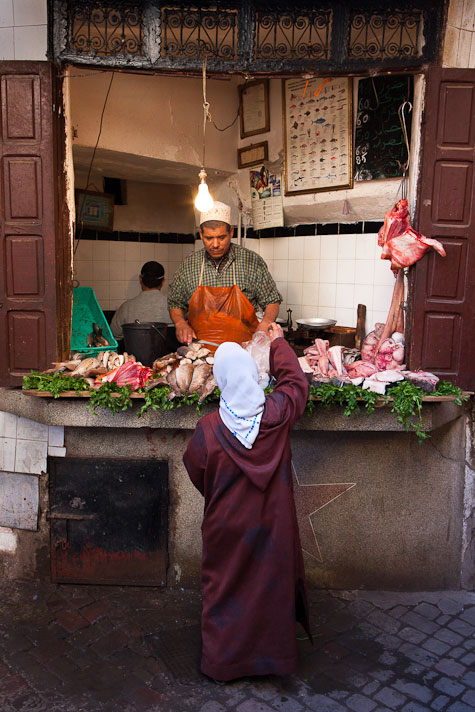
Marrakech street butcher
You’ve traveled Bolivia, Guatemala and Mexico what’s was your favourite subject matter on these travels?
Seeing how local people go about their every-day lives has always been a highlight for me when I go travelling. Going to famous landmarks or museums is ok, but give me a bustling market or a small village and I can spend hours just roaming the streets looking for people and things to photograph.
Tell us what is in your backpack camera/equipment wise?
I try to keep my bag as light as possible. For a body I use the Canon 5D II. I own quite a few Canon L lenses, but the ones I use the most are the 24-70 f/2.8, 70-200mm f/2.8 USM IS II, 50mm f/1.2. A circular polairsing filter is a must. I have a reflector but rarely use it unless working with an assistant/models. I hate tripods so only take one when really necessary. That’s about it.
What kind of precautions did you take whilst carry your DSLR equipment around the world?
I fortunately had no problems with my equipment on my 12 month trip. I met a lot of other people who had their cameras stolen but when I asked further questions they’d always done something stupid like leave their bag unattended or on the back of a chair while in a cafe. If you’ve done a fair bit of travelling I think you soon build up a natural awareness of what is a safe and unsafe environment. A lot of the time I walked around with my camera round my neck and never encountered any problems but there were times I’d definitely stop and put it in my bag away from prying eyes.
One of the biggest logistical problem was backing up the 17,000 photos I took. I didn’t want to take a laptop with me, so opted for two portable hard drives that you just insert your memory card into and click Copy. The two drives were mirrored – one lived in my big rucksack, the other in my day bag. Both were stored in padded camera cases and Ortlieb waterproof cases. Every 3 months I would then buy a Lacie portable drive and post it back to my parents house in the UK.
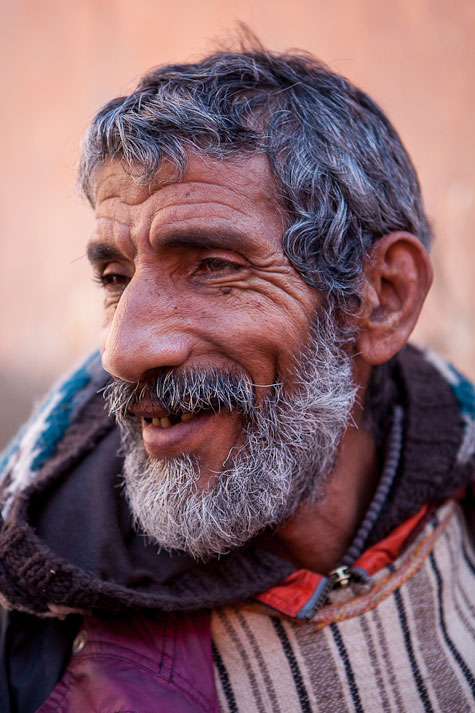
Street portrait of old man
You visited Marrakech recently and took a great photo of a old man. What’s your technique? Do you ask before shooting or rely on a good zoom?
In that instance I asked the man for a photo and he said yes. It was shot at 70mm, f/2.8 to get a nice short depth of field. My technique is simple – with my camera pointing to the floor I smile and ask ‘can I take a photo’, if they say yes I take my time and snap a few frames. If they say no I smile again and walk away. The key thing is to be confident and friendly, accept that a lot of people will say no and when someone does say yes take your time, make sure you’ve got the right camera settings and thank them after.
During my 4 days in Marrakech I was really keen to get a few posed street portraits and probably asked about 40 people, who nearly all said no. One very striking old man told me (through his younger son who spoke English) that a photographer had once offered him £1000 for a photo and he had refused. It’s such a shame because it would have made an exceptional photo but you have to respect their wishes.
– see Tom Robinson’s Marrakech photography
Colour seems to play a big role in your travel photography do you use a particular technique for this such as using filters?
I hate filters – far too fiddly. One of the best ways to improve as a photographer is learn about the different qualities of light and how they record in a camera. Lightroom also helps a great deal as you can pull out certain colours and really make your photos pop.
For someone with an interest in photography what one outstanding tip would you give them about traveling around the world with a dslr?
It may sound weird but I think the most important thing is to really open your eyes when travelling and look for subject matter that will really tell a story and make an interesting photo. I constantly keep pushing myself to re-look at the environment I’m in and try to interpret in a different way. Far too many people get sucked into photographing flowers, dogs and other cliche items.
What software do you use or would you recommend budding travel photographer?
Adobe Lightroom is amazing and shouldn’t be too confusing for beginners. Open it up, import some photos and drag a few sliders to see what they do – you’ll soon get the hang of it.
My main problem is taking time to do post-production on my photos, do you have any advice and what would you suggest with regards to only displaying your best photos?
This is the universal problem for all photographers. It’s important to be really critical of your own work though. Many times I’ve taken a great portrait but the focus is not quite right or something like that, so it is rejected. When processing a shoot I have a set process:
1. Look through all the photos and reject the bad ones.
2. Go through the remaining and 3 star the best ones.
3. Go through them and 4 star the best.
4. Go through again and 5 star the best – then retouch.
This should leave you with the strong set of photos from the shoot and means you only have to retouch a few, rather than all of them.
Here you can find out more about Tom Robinson’s travel photography.

